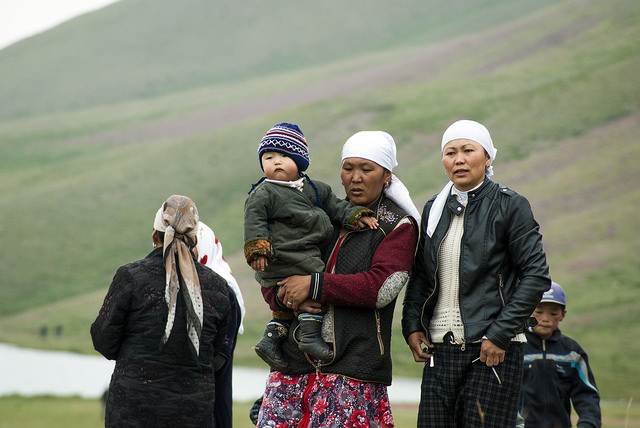4 Facts About Hunger in Kyrgyzstan
 Kyrgyzstan, or the Kyrgyz Republic, is a Central Asian country with 6.5 million inhabitants. It has registered positive changes in living standards in the past decade. In fact, it ranks 36 out of the 127 countries evaluated in the 2024 Global Hunger Index, meaning the threat of hunger is considered low. Despite progress against hunger compared to concerning levels around 15 years ago, Kyrgyzstan faces challenges in pursuing the U.N. Sustainable Development Agenda on eliminating hunger and improving nutrition. Here are four facts about hunger in Kyrgyzstan and how it is being addressed nationally.
Kyrgyzstan, or the Kyrgyz Republic, is a Central Asian country with 6.5 million inhabitants. It has registered positive changes in living standards in the past decade. In fact, it ranks 36 out of the 127 countries evaluated in the 2024 Global Hunger Index, meaning the threat of hunger is considered low. Despite progress against hunger compared to concerning levels around 15 years ago, Kyrgyzstan faces challenges in pursuing the U.N. Sustainable Development Agenda on eliminating hunger and improving nutrition. Here are four facts about hunger in Kyrgyzstan and how it is being addressed nationally.
4 Facts About Hunger in Kyrgyzstan
- Poverty Causes Malnutrition. As many as 2.3 million Kyrgyz citizens live in poverty on less than $2.15 a day and thus lack access to nutrient-rich foods for a balanced diet. Spending more than 50% of one’s earnings solely on food is commonplace. Many households cannot afford to expand their food budgets further to sustain a healthier diet. Furthermore, the impact of the coronavirus pandemic has been especially potent in Kyrgyzstan, where the poverty and food insecurity rates skyrocketed by over 10% and have still not recovered. This phenomenon has also endangered the state of the Kyrgyz economy; 30% of the annual GDP is dependent on remittance payments from Kyrgyz citizens working abroad, yet remittances have also suffered since 2020.
- Geography Matters. Another obstacle to eradicating hunger in Kyrgyzstan is its geography. The country is covered almost entirely by mountains, which makes large-scale crop cultivation difficult without sophisticated infrastructure. Cold winters and hot, dry summers undermine agricultural yields, and restricted access to equipment and funding prevents producers from implementing better irrigation and fertilizing techniques. As such, most of the ⅔ of the population who reside in the vast mountainous areas are subsistence farmers, growing crops to ensure that their families do not starve, rather than generating income from selling them. Agricultural yields equally suffer from tough weather conditions and climate change shocks, particularly floods and mudslides, meaning hunger is possible at any moment. Furthermore, the lack of stable agriculture means that many Kyrgyz citizens are dependent on imported goods for essential foods.
- Malnutrition Mostly Affects Children. Hunger severely affects the well-being of local children. Around 13% of Kyrgyz children below the age of 5 experience stunting and 43% of the same demographic suffer from anemia. By 2011, malnourishment affected around 18% of children, and 22% of child mortality cases were a result of malnutrition. Despite the noticeable diminution of Kyrgyzstan’s stunting and anemia rates relative to decades ago, malnutrition continues to have lasting consequences. With nutrient-deficient diets, children fail to receive the vitamins and minerals required for their growth and development. This may impact their physical and mental capacities in the future and restrict their career prospects.
- Progress Continues. Kyrgyzstan has already achieved plenty in fighting hunger, and further progress is in the making. In 2018, its National Statistics Committee adopted the Food Balance Sheets to examine the national food supply, the kinds of foods being eaten and whether the food supply meets the population’s nutritional requirements. This constitutes an important step toward accurately measuring the prevalence of undernourishment, as prescribed by the U.N. Sustainable Development Goal No. 2: Zero Hunger. Furthermore, the World Food Programme has remained active in Kyrgyzstan, distributing 2,000 tons of food assistance to 64,000 poor Kyrgyz citizens and providing 53,000 children with take-home wheat flour rations in 2024. The program is also partnering with the state to introduce hot meals into the nation’s 2,200 primary schools and is supporting rural farmers with food, funding and training in cultivation, harvesting and sustainable management of resources. Finally, USAID has invested $1.5 million in Kyrgyz agriculture, stimulating the nation’s economy through job creation in food storage facilities and improving the quality of agricultural exports.
Further Progress and Aid
UNICEF is also conducting humanitarian aid in Kyrgyzstan. Its work focuses on bettering child nutrition and has incentivized several breakthroughs in this field. Under its guidance, the country developed its inaugural National Food Security and Nutrition Strategy that directs government efforts to address hunger in Kyrgyzstan and offers children vitamins and minerals to fight malnutrition-induced iron-deficiency anemia. UNICEF first introduced the project in the Talas province, resulting in a 26 % drop in anemia rates between 2009 and 2010.
Shoring up these efforts are those of smaller nonprofit organizations, including the Red Crescent Society Kyrgyzstan and the Aga Khan Foundation. The former has worked with USAID to improve emergency preparedness and vaccination rates in Kyrgyzstan. The latter has pioneered the Mountain Societies Development and Support Programme, working with 520,000 rural Kyrgyz residents. The program links farmers to microfinancing companies and helps them to improve productivity and manage their livestock. Additionally, it provides early childhood development and primary school education services to young people.
These four facts about hunger in Kyrgyzstan show that the country has yet to eradicate hunger entirely. Local poverty rates and geographical landscapes complicate this task, affecting the well-being of the Kyrgyz children. However, the government and the nonprofit sector remain actively involved in alleviating hunger, striving for positive change.
– Dan Mikhaylov and Cole Zickwolff
Photo: Flickr
Updated: November 21, 2024
